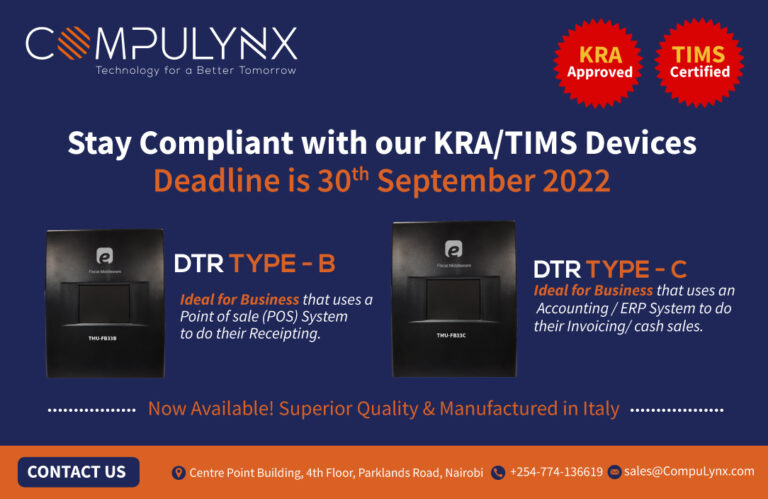Traders have about a month to comply with new tax regulations or risk hefty fines and disruption of their businesses. According to the Kenya Revenue Authority (KRA), September 30, 2022, is the deadline for traders to comply with the Tax Invoice Management System (TIMS) requirements.
The KRA is aligning itself with advances in technology in order to better streamline VAT administration. This includes the introduction of the electronic tax invoice, through the implementation of TIMS.
Going forward, traders are expected to generate validated and electronically transmitted tax invoices in compliance with the VAT (Electronic Tax Invoice) Regulations, 2020. Beginning October 1, only validated electronically transmitted invoices will be admissible for a claim of the input tax as provided under Section 17 of the VAT Act, 2013.
TIMS is an upgrade of the current electronic tax register (ETR) regime that was rolled out in 2005. It will facilitate electronic tax invoice management through standardization, validation, and transmission of invoices to KRA on a real-time or near real-time basis.
The system aims at plugging loopholes resulting from weaknesses in the ETR regime. Sailesh Savani, the founder and CEO of CompuLynx, a technology solutions firm says TIMS is a positive development because it promotes accountability, transparency, and traceability in VAT payment.
The ETI Regulations were gazetted on September 25, 2020, Legal Notice 189. The Regulations provided for a period of 12 months to comply, but this has since been pushed forward. A public notice published on July 13, 2021, provided for the extension of timelines to comply.
VAT registered taxpayers are required to use tax registers that meet the requirements outlined in the Regulations. The KRA has placed on its website a list of approved ETR suppliers and manufacturers. This list will be continuously updated over the course of implementation.
Where a taxpayer replaces the existing tax register, they are required to safeguard the previously used tax register in line with the requirement to keep records for five years as stipulated in Section 23 of the Tax Procedures Act, 2015 (TPA).
According to the KRA, VAT-registered taxpayers are reminded to continue filing their VAT returns as stipulated in Section 44 of the Value Added Tax Act, 2013.
The objective of implementing TIMS is to increase VAT compliance, minimize VAT fraud and increase tax revenue.
- This will be achieved through – Real-time validation of invoices at the trader tills prior to issuance to the customer and transmission to the KRA.
- Improving accuracy in automated VAT data management (to address invoice discrepancies).
- Minimizing VAT fraud through verification of invoice data. Standardization of tax invoices and receipts.
- Simplified return filing – because the system involves pre-filled VAT returns.
“The objective of implementing TIMS is to increase VAT compliance, minimise on VAT fraud and increase”
Mr Savani points out that the previous generation of ETR devices was not connected to any system and generated receipts could not be accounted for. Now, every business transaction will be recorded in the KRA system against a taxpayer’s tax liability. At the end of the month, a trader would know the tax payable after the month’s transactions.
He adds that fake invoices will be a thing of the past. This, he explains, levels the business playing field for all firms. “It is a big leap from where we were, beats unscrupulous taxpayers, and will have a positive impact on the economy,” says Mr Savani.
Source: The Business Daily Newspaper
→eongwae@ke.nationmedia.com


